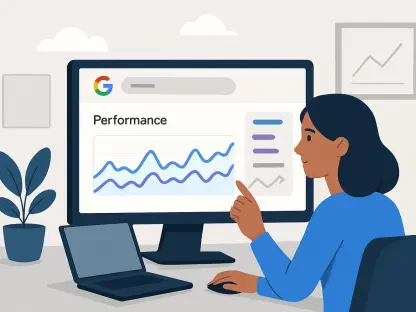Listen to the Article
As the global e-commerce market becomes more competitive than ever, with more enterprises moving their operations online, maintaining a solid brand presence becomes a high-pressure endeavor. Today, business websites must reach unprecedented performance standards, as customers demand fast-loading web pages, smooth chatbot/feature interactions, and fully tailored experiences. In order to meet these demands, companies need to keep their platforms current with modern features and technological advancements.
This article investigates the 10 crucial functions every online storefront should include in 2025 to attract, engage, and convert visitors into devoted clients. Whether you are a part of a small proprietorship or an international corporation, these features will assist you in future-proofing your website and maintaining an edge in the industry.
Mobile-First Design
With more than 60% of global internet traffic generated by mobile devices, adopting a device-adaptive user experience has become a must rather than a nice-to-have upgrade. Google’s mobile-first indexing favors domains optimized for search results via portable devices. Here is an extensive list of must-have features to ensure an up-to-date design:
Responsive Design: Make sure your website adjusts perfectly for all screen sizes.
Fast Load Times: Improve images and code structure to deliver quick loading times across all platforms.
Thumb-Friendly Navigation: Place buttons and menus at touch distances compatible with users’ thumbs.
Simplified Menus: Hamburger menus organize your content and restrict items to the most important tabs.
Accelerated Mobile Pages: Incorporate accelerated mobile pages to quickly load content-heavy blocks like blogs and product listings.
Touchscreen Gestures: Allow swipe, pinch, and tap motions for interactive features like image galleries.
Progressive Web Apps: Provide app-like experiences with offline functionality and push notifications.
Optimized Forms: Focus on shorter forms, auto-fill options, and input masks to streamline data entry.
Vertical Scrolling: Organize content in a single-column format for intuitive scrolling.
Fast Image Loading: Employ next-generation image formats and lazy loading to boost performance.
Dark Mode Compatibility: You must implement dark mode functionality to allow users maximum visibility at night.
Expert Tip:
Avoid performance issues by testing your mobile site through Google’s Mobile-Friendly Test, now called Lighthouse, and PageSpeed Insights.
AI-Powered Chatbots
Site visitors have come to expect immediate responses, and AI-driven chatbots can offer round-the-clock support without human involvement. Also, digital assistants are becoming more sophisticated by the second, delivering personalized interactions and predictive input. Here is what such a level of service includes:
Natural Language Processing (NLP): Smart technology allows chatbots to handle sophisticated inquiries.
Integration with customer relationship management programs: Enables virtual assistants to tap into clients’ profiles to create customized responses.
Multilingual Support: The AI allows shoppers to access support in their preferred language.
Voice Search Optimization
27% of online users worldwide utilize voice search on mobile devices. Here are some key steps to make your site voice-search-friendly and remain visible in search rankings:
Conversational Keywords: Optimize for long-tail, question-oriented queries (e.g., “What is the top web design agency in my area?”).
Structured Data Markup: Applying structured data boosts voice search results, making them more engaging. And when visitor interaction with your site increases, those metrics are known as rich results.
Frequently asked questions: Create dedicated pages for the most common questions, using familiar language that users understand. Update these sections daily.
Advanced Personalization
Customers are looking for tailored experiences. In 2025, companies that utilize data to provide customized content will gain a considerable advantage over competitors. Here are some of the key features you can implement to stay competitive this year and beyond:
Dynamic Content: Your system should provide unique content that changes based on how prospects interact with your website, their location, and their preferences.
Personalized Recommendations: Registered users receive product recommendations through AI technology that understands their past engagement history.
Behavioral Targeting: Track consumer behavior to show users individualized suggestions or alerts.
Enhanced Security Features
Your platform needs strong security measures because cyberattacks become more prevalent each day. Here’s what to do to make sure your customers enjoy protection through enhanced defenses that establish trust with all stakeholders:
Secure Sockets Layer Certificates: Ensure your website operates on Hypertext Transfer Protocol Secure (HTTPS) for safe data transmission.
Two-Factor Authentication: Implement an additional layer of safeguarding for user accounts.
Regular Security Audits: Perform vulnerability assessments and address any weaknesses.
Fast Loading Speed
Your site’s slow loading speed frustrates visitors and harms your search engine rankings. In 2025, users expect websites to load in two seconds or less. Here are the essential steps to accelerate your systems:
Image Optimization: Reduce image file sizes without losing quality.
Content Delivery Network (CDN): Utilize multiple servers to deliver content more rapidly.
Minified Code: Eliminate unnecessary characters from CSS, JavaScript, and HTML files.
Expert Tip:
Use tools like GTmetrix or WebPageTest to solve your latency issues.
Accessibility for All Users
The accessibility standard ensures that all consumers, regardless of their disability level, can easily browse your storefront. Adherence to web accessibility standards is now a must in multiple geographic regions. Here are some features that will help you follow these regulations:
Alt Text for Images: The functionality benefits screen reader tools, which convert images into audio, so visually impaired users can experience them.
Keyboard Navigation: Visitors can explore your site through navigation that does not require mouse control.
Pro Tip:
Adhere to the Web Content Accessibility Guidelines to ensure your website meets compliance standards.
Interactive Content
Engaging prospects through interactive content encourages them to spend additional time on your site. Right now, merely static content will no longer suffice to capture interest. The best features you can implement are:
Quizzes and Polls: Make your audience interact through enjoyable and engaging elements.
Calculators and Tools: Offer value by assisting users with problem-solving (such as return on investment calculators).
360-Degree Product Views: Enable visitors to examine products thoroughly.
Pro Tip:
Easily create interactive content using platforms like Outgrow or Typeform. For tailored interactive features, consider outsourcing professional web development services.
Seamless E-Commerce Integration
Smooth online shopping experience while browsing through your digital products forms the basis of client satisfaction. In the next ten years, the e-commerce space will be more competitive through the use of these functions:
One-Click Checkout: This approach makes the checkout process easier. It increases your sales chances by reducing the possibility of cart abandonments that occur when the protocol is too time-consuming or difficult.
Multiple Payment Methods: Your system should also be capable of reading credit cards, digital wallets, and cryptocurrency payments.
Inventory Management: You should continuously make real-time monitoring of stock quantities.
Analytics and Performance Tracking
Companies have to make use of data in order to succeed in their businesses. It is essential to analyze how users behave on their website to improve it. Here’s how to do that:
Heatmaps: These show where people click most frequently, how they scroll, and how long they stay in different areas of the site.
Conversion Tracking: Test your calls-to-action elements, otherwise referred to as CTAs
A/B Testing: Various designs and content need to be tested in order to establish the best ones.
Pro Tip:
Website performance monitoring and assessment are now possible through the use of analytical tools such as Google Analytics, Hotjar, and Mixpanel.
Conclusion
A website that meets expectations never achieves final completion. Your platform needs ongoing assessment of its performance, user feedback collection, and improvements that enhance its effectiveness for your business operations. Therefore, you must adapt to fast-moving digital trends to stay relevant. Implementing these 10 essential features will ensure that your site provides seamless experiences and a competitive market position for years beyond 2025. Introduce these winning functions today, so your enterprise becomes ready to succeed in the coming years.









